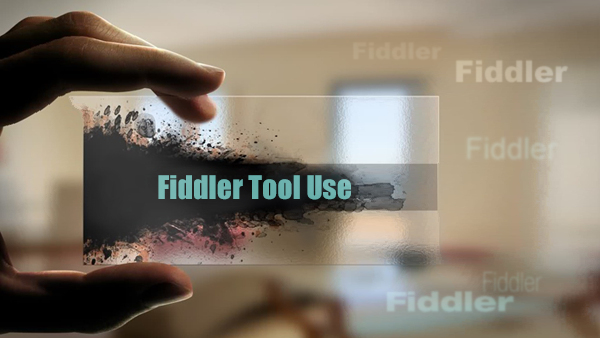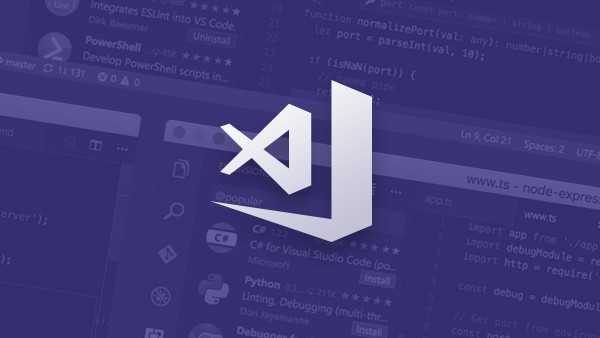本文详细介绍了ElementUI实战,从环境搭建到基础组件的使用,涵盖了布局、表单、导航、按钮以及消息提示等组件的入门教程,帮助新手快速掌握ElementUI的使用方法。
ElementUI实战:新手入门与基础组件使用教程 ElementUI简介与环境搭建ElementUI介绍
ElementUI是基于Vue的桌面端前端UI库,提供了丰富的可复用组件,包括基础的按钮、输入框和复杂的表格、导航等,极大便利了前端开发。遵循Google的Material Design设计规范,ElementUI以其简洁优雅的风格,帮助开发者高效地构建美观的界面。
开发环境准备
为了开始使用ElementUI,你需要准备一个符合要求的开发环境。以下步骤可以帮助你完成所需的环境配置:
- Node.js:推荐安装最新版本的Node.js(版本14或以上)。你可以从官方网站下载安装。
-
Vue.js:确保安装了Vue CLI(Vue命令行工具)。可以使用npm或yarn进行安装:
npm install -g @vue/cli # 或 yarn global add @vue/cli - IDE:推荐使用Visual Studio Code或其他代码编辑器,确保编辑器支持Vue.js和ESLint等工具。
安装与配置ElementUI
安装ElementUI的过程相对简单。首先,创建一个新的Vue项目:
vue create my-elementui-app进入项目文件夹并安装ElementUI:
cd my-elementui-app
npm install element-ui --save在项目的入口文件(如main.js)中配置ElementUI:
import Vue from 'vue';
import App from './App.vue';
import ElementUI from 'element-ui';
import 'element-ui/lib/theme-chalk/index.css';
Vue.use(ElementUI);
new Vue({
render: h => h(App),
}).$mount('#app');经过以上步骤,你就可以在项目中使用ElementUI组件了。
布局与容器组件使用Row与Col组件讲解
Row和Col组件用于构建响应式网格布局。Row代表行,Col则是列。通过Row组件包裹Col组件,可以实现灵活的布局。
基本布局示例
下面通过一个简单的示例来展示如何使用Row和Col组件。
-
创建布局组件:在
src/components目录下创建一个LayoutExample.vue组件:<template> <el-row> <el-col :span="8">第一列</el-col> <el-col :span="8">第二列</el-col> <el-col :span="8">第三列</el-col> </el-row> </template> <script> export default { name: 'LayoutExample' }; </script> -
在App组件中使用:在
src/App.vue文件中引入并使用LayoutExample组件:<template> <div id="app"> <layout-example></layout-example> </div> </template> <script> import LayoutExample from './components/LayoutExample.vue'; export default { components: { LayoutExample } }; </script>
动态布局的实现
我们可以通过动态设置span属性来实现动态布局。例如,基于某个条件来改变列的宽度:
<template>
<div>
<el-row>
<el-col :span="dynamicSpan">动态列</el-col>
</el-row>
</div>
</template>
<script>
export default {
data() {
return {
dynamicSpan: 8
};
}
};
</script>通过data属性中的dynamicSpan变量控制列的宽度,可以使用条件逻辑动态修改dynamicSpan值,实现布局的动态变化。
Input输入框组件
Input组件用于创建输入框。以下是一个输入框组件的简单示例:
<template>
<div>
<el-input v-model="inputValue" placeholder="请输入内容"></el-input>
</div>
</template>
<script>
export default {
data() {
return {
inputValue: ''
};
}
};
</script>Select选择器组件
Select组件用于创建下拉选择框:
<template>
<div>
<el-select v-model="selectedOption" placeholder="请选择">
<el-option
v-for="item in options"
:key="item.value"
:label="item.label"
:value="item.value">
</el-option>
</el-select>
</div>
</template>
<script>
export default {
data() {
return {
selectedOption: '',
options: [
{ value: '选项1', label: '选项1' },
{ value: '选项2', label: '选项2' },
{ value: '选项3', label: '选项3' }
]
};
}
};
</script>Switch开关组件
Switch组件用于创建开关按钮,可以用在需要开启/关闭状态的场景:
<template>
<div>
<el-switch v-model="switchValue"></el-switch>
</div>
</template>
<script>
export default {
data() {
return {
switchValue: false
};
}
};
</script>表单验证实例
表单验证可以通过rules属性来实现。下面是一个简单的表单验证示例:
<template>
<el-form :model="ruleForm" :rules="rules" ref="ruleForm" label-width="100px" class="demo-ruleForm">
<el-form-item label="活动名称" prop="name">
<el-input v-model="ruleForm.name"></el-input>
</el-form-item>
<el-form-item>
<el-button type="primary" @click="submitForm('ruleForm')">提交</el-button>
<el-button @click="resetForm('ruleForm')">重置</el-button>
</el-form-item>
</el-form>
</template>
<script>
export default {
data() {
return {
ruleForm: {
name: ''
},
rules: {
name: [
{ required: true, message: '请输入活动名称', trigger: 'blur' },
{ min: 3, max: 5, message: '长度在 3 到 5 个字符', trigger: 'blur' }
]
}
};
},
methods: {
submitForm(formName) {
this.$refs[formName].validate((valid) => {
if (valid) {
alert('提交成功!');
} else {
console.log('提交失败!');
return false;
}
});
},
resetForm(formName) {
this.$refs[formName].resetFields();
}
}
};
</script>Menu菜单组件
Menu组件用于创建导航菜单。以下是一个基本的菜单组件示例:
<template>
<el-menu default-active="1-4-1" class="el-menu-vertical-demo" @open="handleOpen" @close="handleClose" :collapse="isCollapse">
<el-submenu index="1">
<template slot="title">
<i class="el-icon-location"></i>
<span slot="title">导航一</span>
</template>
<el-menu-item-group>
<span slot="title">分组一</span>
<el-menu-item index="1-1">选项1</el-menu-item>
<el-menu-item index="1-2">选项2</el-menu-item>
</el-menu-item-group>
<el-menu-item-group title="分组2">
<el-menu-item index="1-3">选项3</el-menu-item>
</el-menu-item-group>
<el-submenu index="1-4">
<template slot="title">选项4</template>
<el-menu-item index="1-4-1">选项4-1</el-menu-item>
</el-submenu>
</el-submenu>
<el-menu-item index="2">
<i class="el-icon-menu"></i>
<span slot="title">导航二</span>
</el-menu-item>
<el-menu-item index="3">
<i class="el-icon-document"></i>
<span slot="title">导航三</span>
</el-menu-item>
</el-menu>
</template>Tab标签页组件
Tabs组件用于创建标签页导航:
<template>
<el-tabs v-model="activeName" @tab-click="handleClick">
<el-tab-pane label="用户管理" name="first">
用户管理内容
</el-tab-pane>
<el-tab-pane label="配置中心" name="second">
配置中心内容
</el-tab-pane>
<el-tab-pane label="角色管理" name="third">
角色管理内容
</el-tab-pane>
<el-tab-pane label="定时任务补偿" name="fourth">
定时任务补偿内容
</el-tab-pane>
</el-tabs>
</template>
<script>
export default {
data() {
return {
activeName: 'first'
};
},
methods: {
handleClick(tab, event) {
console.log(tab, event);
}
}
};
</script>Breadcrumb面包屑组件
Breadcrumb组件用于创建面包屑导航,以下是一个面包屑组件的简单示例:
<template>
<el-breadcrumb separator="/">
<el-breadcrumb-item :to="{ path: '/' }">首页</el-breadcrumb-item>
<el-breadcrumb-item :to="{ path: '/activity' }">活动中心</el-breadcrumb-item>
<el-breadcrumb-item>活动列表</el-breadcrumb-item>
<el-breadcrumb-item>活动详情</el-breadcrumb-item>
</el-breadcrumb>
</template>面包屑组件通常用于展示用户当前所在页面的路径,帮助用户理解当前页面的上下文。以下是一个使用面包屑组件的更详细的示例:
<script>
export default {
data() {
return {
pathList: [
{ path: '/', name: '首页' },
{ path: '/activity', name: '活动中心' },
{ path: '/activity/list', name: '活动列表' },
{ path: '/activity/detail', name: '活动详情' }
]
};
}
};
</script>
<template>
<el-breadcrumb separator="/">
<el-breadcrumb-item v-for="item in pathList" :key="item.path" :to="{ path: item.path }">
{{ item.name }}
</el-breadcrumb-item>
</el-breadcrumb>
</template>使用场景举例
导航与菜单组件可以用于许多场景,例如:
- 网站导航:创建一个网站的导航栏,让用户可以方便地浏览网站的不同部分。
- 管理后台:在管理后台中,可以使用导航组件来组织和展示各种管理功能。
- 多级导航:实现多级导航功能,如嵌套的菜单项和子菜单项。
Button按钮组件基础
Button组件用于创建各种按钮。以下是一个基本的按钮组件示例:
<template>
<el-button type="primary">主要按钮</el-button>
<el-button type="success">成功按钮</el-button>
<el-button type="info">信息按钮</el-button>
<el-button type="warning">警告按钮</el-button>
<el-button type="danger">危险按钮</el-button>
</template>按钮的类型与大小
ElementUI提供了多种按钮类型和大小,可以通过type和size属性来设置。以下是一个示例:
<template>
<el-button type="primary" size="medium">中等按钮</el-button>
<el-button type="primary" size="small">小按钮</el-button>
<el-button type="primary" size="mini">迷你按钮</el-button>
</template>按钮的加载状态与图标
按钮可以设置加载状态和图标。以下是一些示例代码:
<template>
<el-button type="primary" :loading="true">加载中...</el-button>
<el-button type="primary" icon="el-icon-edit"></el-button>
<el-button type="primary" icon="el-icon-share"></el-button>
<el-button type="primary">
<i class="el-icon-upload2"></i>
上传文件
</el-button>
</template>Message消息提示
Message组件用于创建消息提示框,可以传递不同的状态信息:
this.$message({
message: '这是一条消息提示',
type: 'success'
});MessageBox对话框
MessageBox组件用于创建对话框,可以用于确认操作或选择选项:
this.$confirm('此操作将永久删除该文件, 是否继续?', '提示', {
confirmButtonText: '确定',
cancelButtonText: '取消',
type: 'warning'
}).then(() => {
this.$message({
type: 'success',
message: '删除成功!'
});
}).catch(() => {
this.$message({
type: 'info',
message: '已取消删除'
});
});Toast通知
Toast组件用于创建短时的、无交互的提示信息:
this.$notify({
title: '成功',
message: '这是一条成功的提示消息',
type: 'success'
});组件配置与使用场景
可以进一步自定义消息提示、对话框和Toast的通知样式和内容。例如:
this.$message({
message: '这是一条消息提示',
type: 'info',
duration: 5000 // 设置消息持续时间
});
this.$alert('这是一条消息提示', '提示', {
confirmButtonText: '确定',
callback: action => {
this.$message({
type: 'info',
message: 'action: ' + action
});
}
});通过以上示例,你可以看到ElementUI的各种组件在实际项目中的应用情况。这些组件提供了丰富的功能,帮助开发者更快地构建功能完整、美观的前端应用。
希望这个教程对你的ElementUI学习之旅有所帮助。如果你需要更多关于ElementUI的详细信息,可以参考其官方文档。如果你想进一步学习Vue.js或前端开发,可以访问慕课网,那里有许多优秀的教程和项目案例。

 随时随地看视频
随时随地看视频



